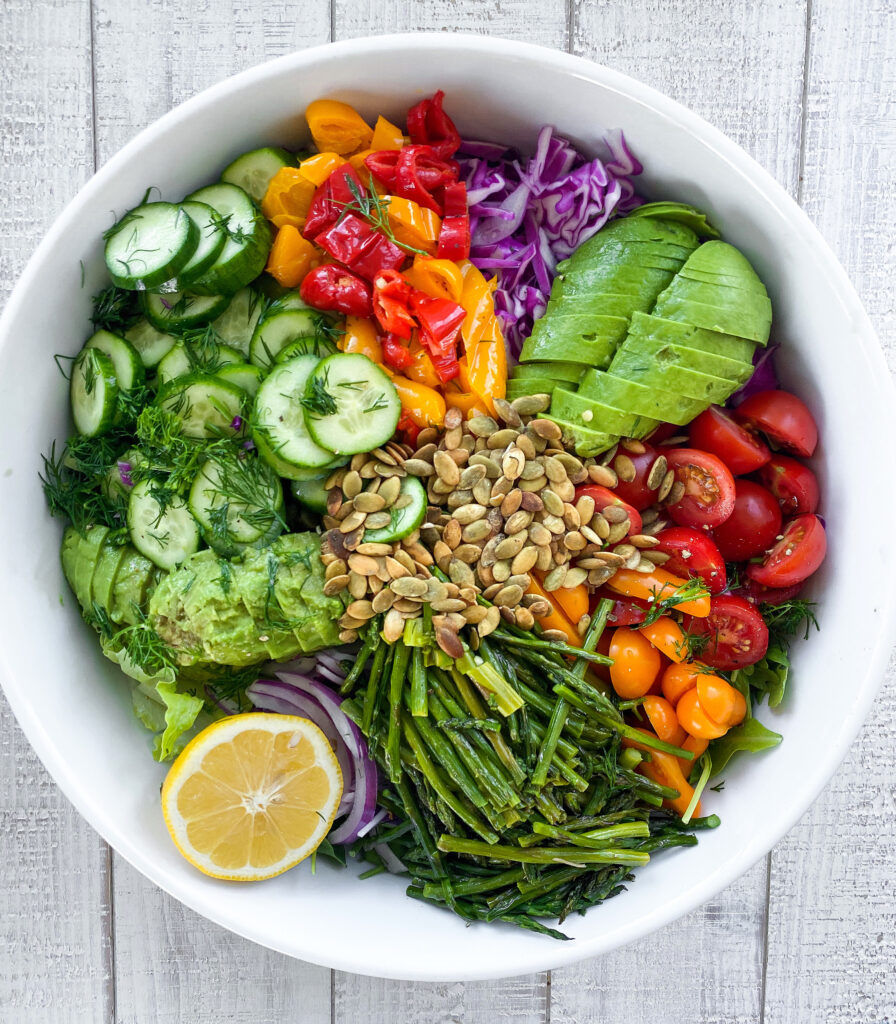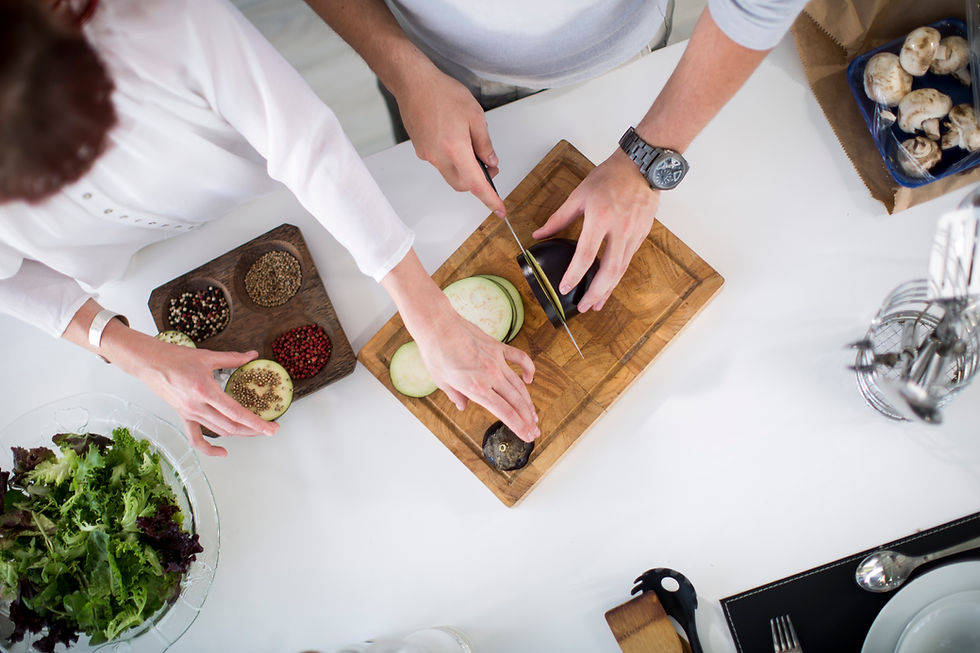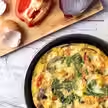How To Make A Healthy Raw Rainbow Bowl (by a Nutritionist)
- Emma Lisa

- Mar 18, 2024
- 9 min read
Updated: Dec 14, 2024
Whether you're interested in saving our fur-friends or just love the idea of better nutrition and boosting your weight loss from a plantbased diet, eating more plants is an excellent way to nourish your body. As a Nutritionist who is primarily plantbased herself, today I'm sharing how to make one of these divinely delicious rainbow bowls and unpacking the nutrition behind why it's so nutritious. Grab a napkin and let's get in to it!

Before I dive into what makes this colourful bowl so incredibly healthy and good for you, can we all take a minute to just appreciate my fellow foodie friend, Sara Tercero of Better Food Guru for the inspiration and recipe. Literally a rainbow of goodness is shared in one vibrantly coloured bowl with a winning combination of textures, crunch and bursts of veggie sweetness. Yum!
GRAB SARA'S RECIPE: Better Food Guru →
How To Make A Rainbow Bowl
When going plantbased, the key is to centre your plate or bowl around wholefood ingredients that are sourced from a wide variety of colourful plants – think freshly picked veggies and fruits, wholesome grains, beans, peas, lentils, nuts, and seeds. Some people choose to keep it fully vegan, while others might also add in a little extra protein from seafood, cheese or hard-boiled eggs. There is no right or wrong. If having feta or a hard-boiled egg on top helps you devour a bowl like this, then get shelling those eggs. If adding grilled salmon, prawns or even a little leftover roast chicken to your bowl helps you gobble it all up - go for it!
Plantbased - especially in the Eat Nourish Glow universe - is a flexible eating plan that simply focuses on making healthier meals based on more plant ingredients. So you do you - we're just hoping to inspire you to reach for more veggies than processed foods around here. Let's pick our ingredients, rainbow colours, and get started!
You Might Like:
Making Plantbased Rainbow Bowls

The method of making rainbow bowls is very simple - add plants, and lots of them! Rainbow bowls are exactly as the name describes, filled with a rainbow of brightly coloured, plantbased ingredients. Each colourful ingredient provides a different set of primary nutrients and macros. To help you start building rainbows, here's a helpful breakdown of the nutrition and health benefits of each by colour.
Rainbow Ingredients & Nutrients
Pick a few ingredients from each category to build your bowl with a purposeful emphasis on choosing a wide variety of colour and nutrients. This is a super fun way to balance your plate and ensure that you are eating a good balance of macros and nutrition with every bite.
Red fruits and vegetables:
beetroot: source of folate, manganese
capsicums: provides vitamin C, lycopene (important for heart health)
cherry tomatoes: source of vitamin C, potassium
chili: source of vitamin C and capsaicin which boosts the metabolism
cranberries: source of vitamin C, fibre
radishes: source of vitamin C, anthocyanins (antioxidants)
red lentils: a plantbased protein, fibre, iron
Orange fruits and vegetables:
carrots: beta-carotene (converts to vitamin A), vitamin A
grapefruit: excellent source of vitamin C, fibre, helps to boost metabolism
mango: source of vitamin C, vitamin A
pumpkin: good source of vitamin A, vitamin C, fibre
orange: excellent source of vitamin C, fibre
sweet potato: excellent source of beta-carotene (converts to vitamin A), vitamin A
Yellow fruits and vegetables:
banana: source of vitamin B6, fibre and potassium
capsicums: excellent source of vitamin C, capsanthin (antioxidant)
corn: provides lutein, zeaxanthin (important for eye health)
pineapple: excellent source of vitamin C, manganese
Green fruits and vegetables:
asparagus: provides vitamin K, folate, vitamin A
avocado: a healthy fat, provides both potassium and fibre
broccoli: source of vitamin C, vitamin K (important for blood clotting)
celery: provides vitamin K, vitamin A, fibre (low in calories)
green beans: source of vitamin K, fibre
edamame: a plantbased protein, iron
kale: provides vitamin K, vitamin A, vitamin C (depending on variety)
sugar snap peas: source of vitamin K, vitamin C
watercress: provides vitamin K, vitamin C, folate
zucchini: source of manganese, vitamin C
Purple fruits and vegetables:
blackberries: source of vitamin C, manganese
cabbage (purple): source of vitamin C, anthocyanins (antioxidants)
eggplant: fibre source, potassium
figs: provides fibre, potassium
plums: good source of vitamin C, dietary fibre
Black/Brown fruits and vegetables:
black beans: plantbased protein, provides fibre, folate
chickpeas: plantbased protein, provides fibre and iron
brown lentils: fibre, folate, combine with green peas for a complete plant protein
White fruits and vegetables:
pear: source of vitamin C, fibre
mushroom: provide B vitamins, riboflavin (B2), niacin (B3)
onions: source of vitamin C, manganese, calcium
potato: source of vitamin C, potassium, manganese
turnips: source of vitamin B6, vitamin C, potassium
There are many other fruits and veggies you may want to add based on your individual dietary needs and tastes. Feel open to experiment and come up with combination that you love and make you feel good after consuming.
Assemble A Plantbased Rainbow Bowl

Once you have picked all your colourful ingredients, its time to assemble your bowl. Start with a base of greens or a scattered layer of grain such as quinoa, rice noodles or brown rice. Ideally, I recommend using greens for this step and being quite generous.
Next, position the colourful fruit and veggies in small sections around the bowl (pictured). This creates that beautiful rainbow effect and let's you mix flavours in different ways as you eat.
As you can see, assembling your plantbased bowl is quick and easy to do, and something my kids love doing with me. It's a fantastic way to teach them about nutrition and inspire them to make and eat more healthy meals.
Choosing Plantbased Nutrition
Whenever I talk about plantbased foods, I always get asked what macros and food choices are most important. Given meat provides a mega dose of protein in one nutritional hit, when you go plantbased you need to consider a variety of sources in order to get the same serving.
Legumes
Cue the Beano! Actually don't, you won't really need it. Beans and lentils are an excellent plantbased protein and carbohydrate. Adding them to your rainbow bowl provides sustenance and a balance of satiating protein. To reduce the natural gas caused by eating lots of beans and lentils, I recommend soaking canned beans or lentils before eating them, and give them a thorough rinse a few times.
beans: black beans, kidney, pinto, white beans, cannellini, chickpeas, adzuki, or lime beans
lentils: green lentils, black, brown, green, or red lentils
peas: green peas, split peas, yellow peas
soybeans and soy products: non-GMO soybeans, edamame, tofu, tempeh, or Miso
others: fava bean, lack-eyed peas, mung beans or bean
Legumes are not only rich in plant protein but also provide added nutrients like dietary fibre, vitamins, and minerals. Including a variety of legumes in your diet is an great way to eat more variety and balance your plate with wholefood protein from non-animal sources.
What To Shop For: most beans and peas are found canned and dry form, with the except of sprouts, fresh peas and green beans. Look for beans and peas that are "low in sodium" or have "no salt added", so be sure to read those nutrition labels. Whether you buy canned or dry are both, remember to soak or rinse them well!
Plantbased Healthy Whole-Grains
Whole grains are an essential staple in a well-balanced plantbased diet, providing dietary fibre, core nutrients, and a satisfying base for many dishes. Here's a list of plantbased whole grains to experiment with in your bowls. You only need a little such as 3 tbsp to 1/2cup, so use sparingly. If you are gluten-free (like myself), look for the GF to see if it is safe for you.
barley: a chewy grain that adds texture and added fibre to any salad
brown rice (GF): a staple that works well as a high fibre base for salad bowls
buckwheat (GF): despite its name, it's gluten-free and works great in salad bowls
bulgur: precooked and quick to prepare, ideal for salads
farro: a nutty and chewy grain often used in salads; high in fibre
freekeh: roasted green wheat, offering a smoky flavour for various your salads
quinoa (GF): a complete protein, rich in fibre and versatile for various dishes
wild rice (GF): nutty and aromatic, perfect in your salad bowl
What Shop For: most whole-grains are found in the sauces and pasta aisle, or the baking aisle. You may also find a few options in the health food sections of the grocery store. Many lifestyle and health food shops stock a wide variety of different grains you can browse.
Nuts & Seeds
Nuts and seeds are nutrient-dense additions to a plantbased diet, providing essential fats, protein, fibre, vitamins, and minerals. Here's a list of great additions to salads, just use them sparingly:
Nuts:
almonds: a rich in vitamin E, magnesium, and healthy fats, excellent as a snack
walnuts: high in omega-3 fatty acids and antioxidants, great for topping desserts
cashews: deliciously creamy nuts that add a buttery texture to dishes
pecans: sweet and crunchy, good fibre source and great in salads and desserts
Brazil nuts: a great source of selenium, an essential mineral; eat in moderation
hazelnuts: nutty and versatile, often used in desserts and spreads
pistachios: lower in calories and high in protein, add to salads, oatmeal and desserts
macadamia: butter-like nuts with a smooth texture, eat in moderation
Seeds:
chia seeds: packed with omega-3 fatty acids, fibre, and protein (see recipes)
flaxseeds: high in fibre and omega-3s, often ground for better absorption
sunflower seeds: nutrient-rich seeds with a mild flavour
pumpkin seeds (pepitas): a good source of iron, magnesium, and zinc.
sesame seeds: tiny seeds rich in calcium and healthy fats
hemp seeds: excellent source of plantbased protein and omega-3s
poppy seeds: tiny seeds used in baking and cooking
sesame seeds: small seeds with a rich, nutty flavour
Adding a variety of nuts and seeds into your plantbased meals adds texture, flavour, and a nutritional boost. Add them to other meals like snacks, smoothies, and main meals.
What To Shop For: when buying whole nuts, choose raw with the skin on or roasted. Avoid those that have been processed in any way to remove the skin, salted or enhanced with flavourings. When choosing a nut butter, be sure to look for simple ingredients —just the nut or seed, and salt (optional). Avoid any and all nut or seed butters that contain added sugar, thickeners or palm oil.
Plantbased Meat Alternatives
While rainbow bowls are usually made with primarily fresh vegetables and fruits, there are no rules when it comes to making a deeply nourishing bowl. So, if you want to add a little plant protein to balance your blood sugar or support weight loss on a high-protein diet, try these meat-free alternatives and suggestions:
brown rice & peas: combine a 50/50 serving together to create a complete protein
chia seeds: beyond being high in omega-3 fatty acids, chia seeds are a protein boost
edamame: young soybeans are not only delicious but also high in protein
green peas: peas are an excellent plant protein source and also high in fibre
legumes: beans, lentils, and chickpeas are very good sources of protein
lentils: red, green, or brown, lentils are protein and dietary fibre powerhouses
protein powder: choose hemp, soy, or a brown rice/pea combination for protein
nuts & seeds: almonds, peanuts, chia seeds, and hemp seeds are protein-rich choices
quinoa: a complete protein grain, rich in essential amino acids and dietary fibre
seitan: made from wheat gluten, seitan is a concentrated vegan protein source
tofu & tempeh: non-GMO soy products are vegan, versatile and protein-packed
veggie burgers or loaves: made with high protein ingredients like beans and lentils
What To Shop For: plantbased meat alternatives are typically lower in saturated fat compared to animal proteins, especially red meat. They're also an easy way to get a large dose of protein on a budget compared to meat products. Look for fresh, canned or dry protein options, and avoid those pre-made vegan products that claim high protein.
You Might Like:
One Last Things, Before You Go...
Enjoy the idea of going more plantbased? Browse for more nutrition and healthy eating guides on the Lifestyle Blog or come join my Plantbased & Loving It! Challenge for only $67. You'll receive weekly emails with vegetarian recipe cards, helpful printables, and group Zoom calls from a Nutritionist sharing everything you need to know to ease into a more plantbased lifestyle, whether you want to go all in or just eat more plants to be healthier. Come join us today, click here.
Emma Lisa, Women's Nutritionist

Emma Lisa is a Nutritionist & Women's Health Practitioner with a Certificate III + IV in Fitness and Personal Training from Sydney, Australia. She is a published cookbook author, passionate lifestyle blogger, and advocate for women's health and anti-diet culture. When she's not in clinic, Emma is mum to five kids, in her test kitchen and a wellness digital creator.
Healthy + happiness,
Emma Lisa xx
HEALTH & NUTRITION PRACTITIONER

If you liked this blog post, I have a favour to ask!
Please take moment to subscribe, and to write a review. Doing this helps me know you found value in the content I work hard to share for free and for educational purposes. I would be truly be so grateful to hear your thoughts, answer questions and get your feedback. Thank you so much!

What's Happening This Week?
Inside the Eat Nourish Glow Free Membership there are always new wholefood recipes, meal planning tips, Messenger topic chats, and free health challenges to be found. Come join us, its totally free, so let's go!


































Comments